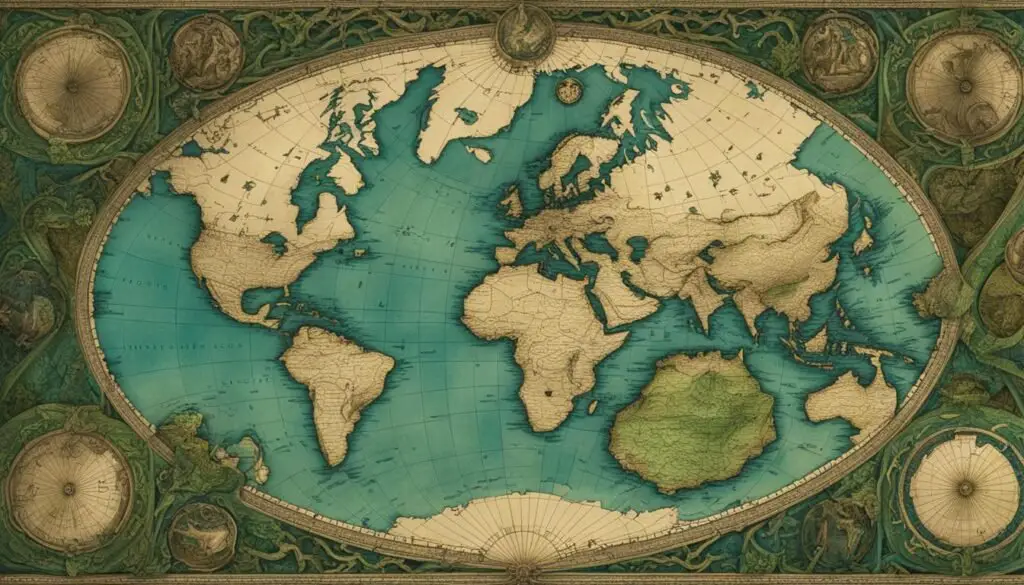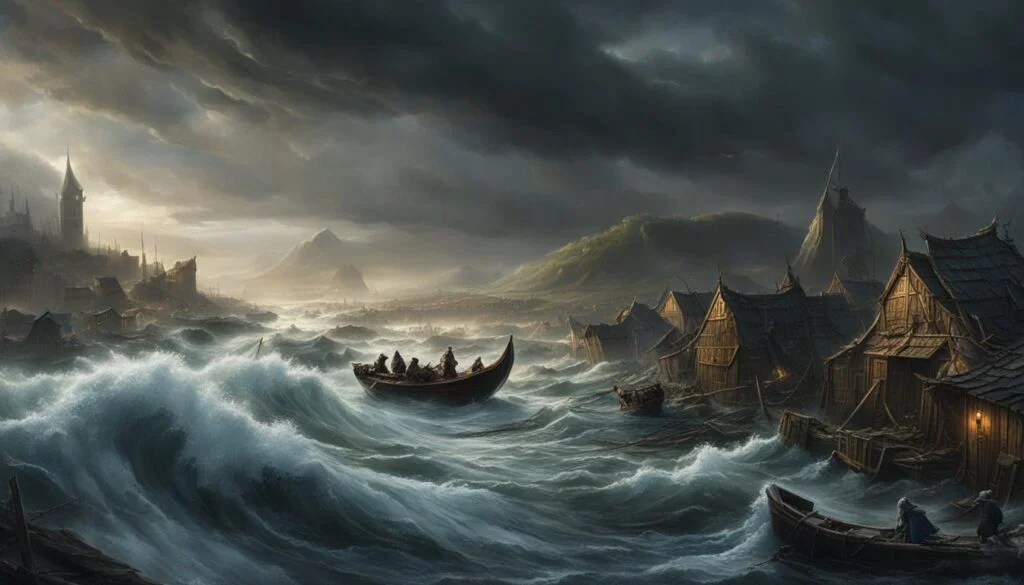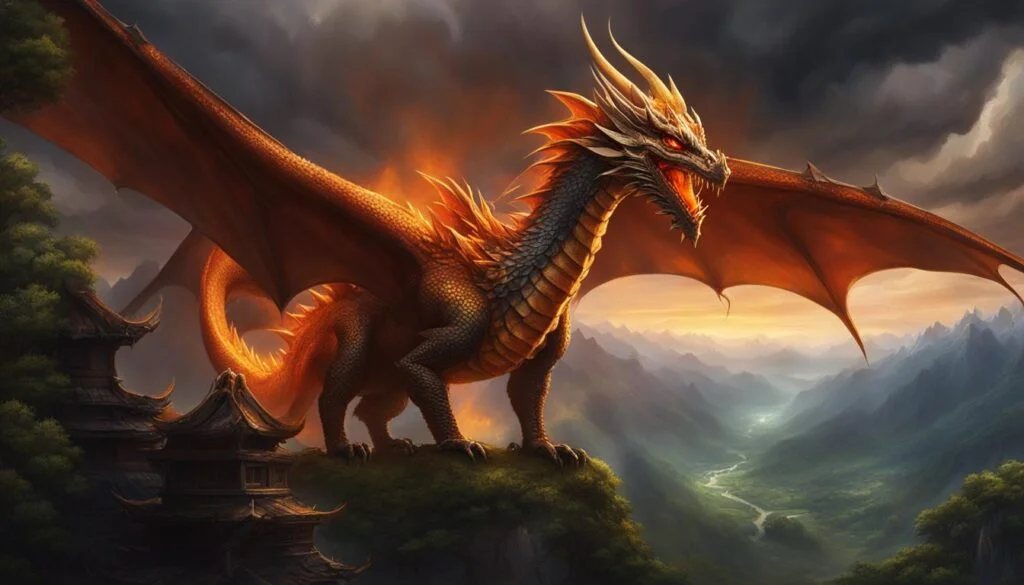Norse mythology, with its rich folklore and epic tales, originated in Scandinavia and has since spread its influence to various countries across the globe. The myths and legends of the Norse gods and heroes continue to captivate people’s imaginations and have left a lasting impact on literature, art, popular culture, and even tourism.
While the origins of Norse mythology can be traced back to the Scandinavian countries of Norway, Sweden, and Denmark, its cultural influence has extended far beyond these regions. In the 19th century, Norse myths gained popularity in Europe, particularly in Germany and England, thanks to the publications of scholars and writers who reintroduced these ancient tales to the public.
Fast forward to the present day, and Norse mythology has become a global phenomenon, finding its way into popular culture, literature, comics, video games, and more. Whether it’s through the Marvel comics and films featuring characters like Thor and Loki, or the works of renowned authors like J.R.R. Tolkien and Neil Gaiman, Norse mythology continues to find new interpretations and adaptations that resonate with audiences worldwide.
The enduring appeal of Norse mythology lies in its timeless narratives, complex characters, and universal themes. These age-old stories of gods, giants, and heroes speak to our shared human experiences and offer insights into the rich tapestry of cultural beliefs and traditions.
Key Takeaways:
- Norse mythology originated in Scandinavia, specifically in Norway, Sweden, and Denmark.
- Its cultural influence has spread to various countries around the world.
- Norse mythology has had a significant impact on literature, art, popular culture, and tourism.
- Characters and elements from Norse mythology can be found in comics, movies, novels, video games, and more.
- The enduring appeal of Norse mythology lies in its timeless narratives and universal themes.
The Reintroduction of Norse Mythology to Popular Culture
The rich mythology of the Norse people, which originated in Scandinavia, experienced a resurgence in popularity during the 19th century. Scholars and writers, such as George Webbe Dasent, played a pivotal role in reintroducing Norse mythology to popular culture. Their efforts brought the captivating tales of gods, giants, and mythical creatures back into the public eye.
Norse mythology’s influence on literature and art is particularly noteworthy. Authors like William Morris embraced the myths, composing poetry and translating Icelandic sagas into English. The work of composer Richard Wagner showcased Norse mythology in his renowned opera cycle, “The Ring of the Nibelung.”
Fast forward to today, and Norse mythology continues to have a profound impact on popular culture. Its presence can be seen in various forms of media, including comics, graphic novels, manga, anime, and webcomics. The enduring appeal and timeless narratives of Norse mythology have inspired countless creators to weave its elements into their works, captivating audiences worldwide.
Depictions of Norse Mythology in Comics and Graphic Novels
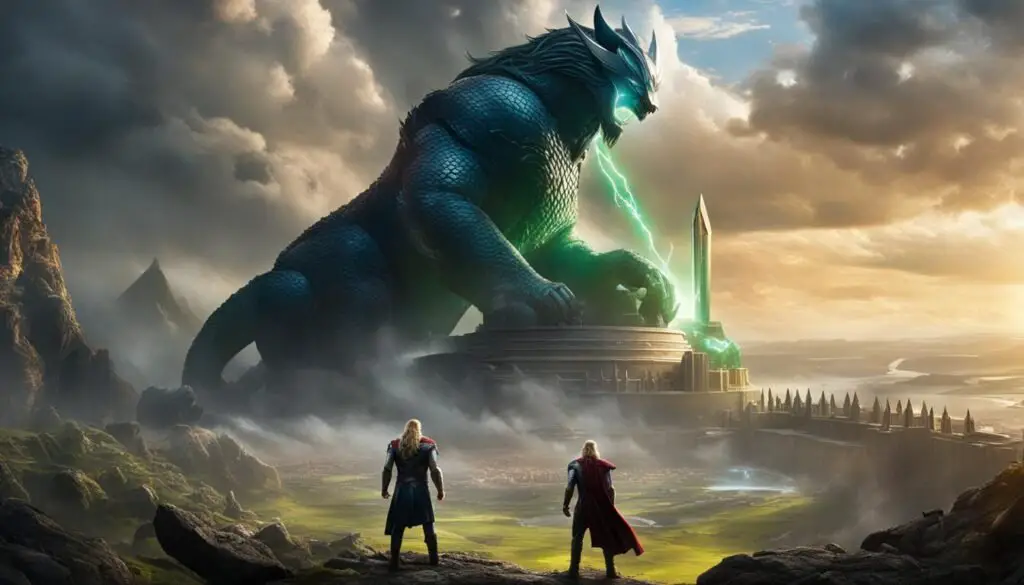
Furthermore, Norse mythology has made its way into the popular world of manga and anime. “Matantei Loki Ragnarok” and “Vinland Saga” are two manga series that incorporate Norse mythological elements into their captivating storylines, appealing to fans of both Norse mythology and Japanese culture.
To introduce young readers to the captivating world of Norse mythology, graphic novels have been specifically created to retell the ancient tales in an engaging and accessible format. These graphic novels serve as a gateway for readers to explore and appreciate the rich tapestry of Norse myths and legends.
Overall, the integration of Norse mythology into comics and graphic novels has not only introduced these ancient tales to new audiences but also provided a platform for creative interpretations and adaptations. Whether in Marvel’s superhero-filled universe or the vibrant pages of graphic novels, the enduring power of Norse mythology continues to inspire and enthrall readers of all ages.
Norse Mythology in Literature
Norse mythology has left a lasting imprint on the world of literature, captivating readers with its rich tales and vibrant characters. From classic novels to contemporary works, the influence of Norse mythology can be seen across various genres, including fantasy, young adult fiction, and novels.
Renowned authors have drawn inspiration from Norse mythology, infusing their works with its timeless themes and epic narratives. Writers like H. Rider Haggard and L. Sprague de Camp have penned novels that immerse readers in the realms of gods, heroes, and mythical creatures. These authors skillfully interweave Norse mythological elements into their stories, creating captivating and immersive reading experiences.
One notable example of Norse mythology’s impact on literature is J.R.R. Tolkien’s masterpiece, “The Lord of the Rings.” Tolkien’s fictional world of Middle-earth draws heavily from Nordic mythology, with characters like Gandalf the Grey embodying the wisdom and power associated with the Norse god Odin. The epic battles and quests in “The Lord of the Rings” mirror the grandeur and heroism found in Norse sagas.
In recent years, there has been a resurgence of interest in Norse mythology, propelling it back into the literary spotlight. Acclaimed author Neil Gaiman has embraced Norse gods and legends in his works, such as “American Gods” and “Norse Mythology.” Gaiman’s writing transports readers into a world where Thor, Loki, and Odin reign supreme, reimagining their stories for a new generation.
Norse mythology has also found a place in young adult fiction, captivating young readers with tales of adventure and mythology. Notable examples include Rick Riordan’s “Magnus Chase and The Gods of Asgard” series, which follows the adventures of a young demigod descended from Norse royalty. Riordan skillfully incorporates Norse mythology into a modern setting, providing a fresh and accessible entry point for young readers to discover the rich tapestry of Norse lore.
Through the pages of novels, readers can journey into the enchanting realms of Norse mythology, where gods clash, heroes rise, and destiny unfolds. The enduring popularity of Norse mythology in literature is a testament to its universal appeal and ability to captivate readers across generations.
Works influenced by Norse Mythology:
- “She” by H. Rider Haggard
- “The Hammer of Thor” by L. Sprague de Camp
- “The Lord of the Rings” by J.R.R. Tolkien
- “American Gods” by Neil Gaiman
- “Norse Mythology” by Neil Gaiman
- “Magnus Chase and The Gods of Asgard” series by Rick Riordan
Norse Mythology in Webcomics
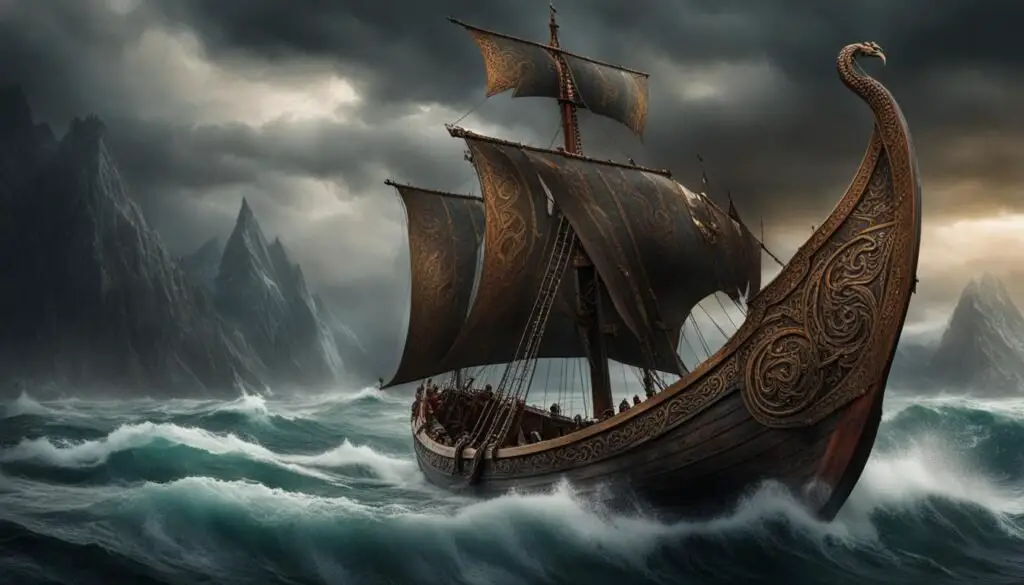
Webcomics have become a popular platform for exploring Norse mythology. Artists and writers have found creative ways to reimagine the gods and creatures of Norse mythology in a modern setting, captivating readers with their unique interpretations. These webcomics provide an accessible and engaging way to delve into the rich narratives and characters of Norse mythology.
One example of a webcomic that embraces Norse mythology is “Sparkling Generation Valkyrie Yuuki.” This comic follows the adventures of a young Valkyrie who is tasked with protecting the world from supernatural threats. Incorporating elements of Norse mythology, the comic brings together modern storytelling with ancient folklore.
Another webcomic, “Brat-halla,” takes a humorous approach to Norse mythology. It presents the young Norse gods as mischievous teenagers who must navigate the challenges of their divine powers while dealing with typical teenage drama. This comic injects a fresh and entertaining spin on the timeless tales of Norse mythology.
Not only do webcomics reimagine Norse mythology in modern settings, but they also incorporate it into fantasy stories. “The Order of the Stick” is a long-running webcomic that blends humor and adventure, featuring a group of adventurers in a Dungeons & Dragons-inspired world. Within this fantasy realm, Norse mythology plays a role, enriching the comic’s lore and captivating readers with its legendary motifs.
“Stand Still. Stay Silent.” is another webcomic that seamlessly integrates Norse mythology into its post-apocalyptic storyline. Set in a world ravaged by a mysterious pandemic, the comic includes elements from Scandinavian folklore and mythology, creating a unique and immersive reading experience.
Webcomics offer a visually engaging and easily accessible format for artists and writers to explore and reinterpret Norse mythology. With their rising popularity, webcomics provide a platform for the continued exploration and celebration of Norse mythology in the digital age.
Norse Mythology in Norse Countries
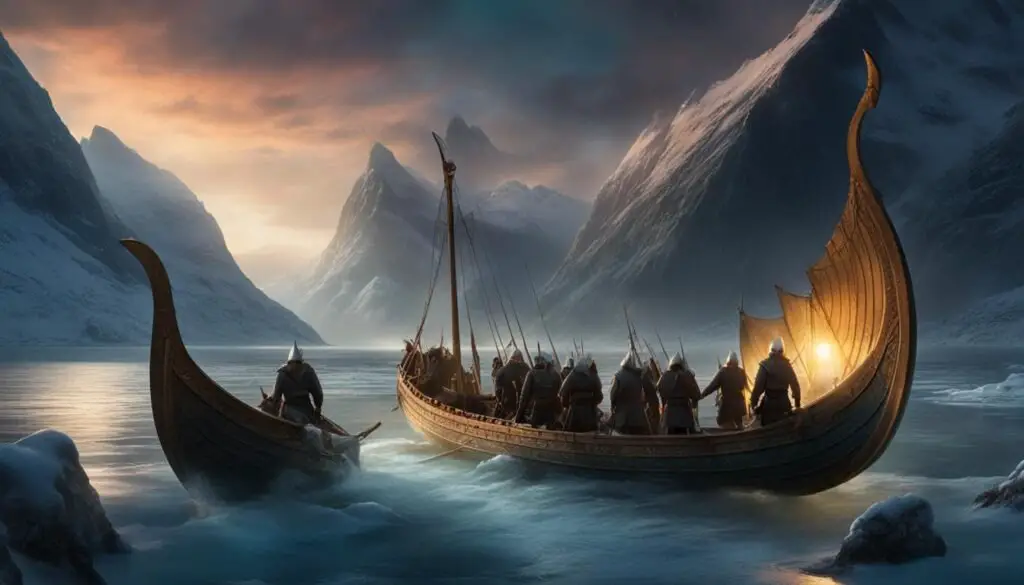
Norse mythology holds a special place in the cultural heritage of the Nordic countries. Norway, Sweden, and Denmark have a deep connection to the mythology and have dedicated historical sites and museums to preserving and showcasing its rich traditions.
In Norway, you can visit the Viking Ship Museum in Oslo, which houses well-preserved Viking ships and artifacts, offering a glimpse into the seafaring culture of the Norse people. Another must-visit location is the Borgund Stave Church, a magnificent wooden structure that reflects the architectural style of the Viking era.
Sweden is also home to significant sites that celebrate Norse mythology. The Gamla Uppsala, an ancient burial site, is believed to be the final resting place of ancient Swedish kings and is associated with Norse legends. The Skansen Open-Air Museum in Stockholm allows visitors to experience Swedish folklore and traditions, including Norse mythology, through interactive exhibits and performances.
In Denmark, the National Museum of Denmark in Copenhagen showcases a collection of Viking artifacts, including jewelry, weapons, and tools, providing insight into the lives of the Norse people. The Trelleborg Viking Fortress, a reconstructed Viking ring fortress, gives visitors a chance to experience life in a Viking settlement firsthand.
The cultural significance of Norse mythology in Scandinavia extends beyond museums and historical sites. Festivals and reenactments are held throughout the year, bringing the mythology to life through vibrant celebrations and performances. Storytelling events allow people to immerse themselves in the captivating tales of gods, heroes, and mythical creatures.
Furthermore, Norse mythology is taught in schools, ensuring that the younger generations in Norway, Sweden, and Denmark grow up with an understanding of their cultural heritage. It plays a crucial role in shaping the cultural identity of these countries, forming a connection to their past and preserving their traditions for future generations.
Explore the cultural significance of Norse mythology by visiting these Nordic countries and immersing yourself in the rich tapestry of history, folklore, and legends that continue to captivate people around the world.
Influence of Norse Mythology in Global Culture
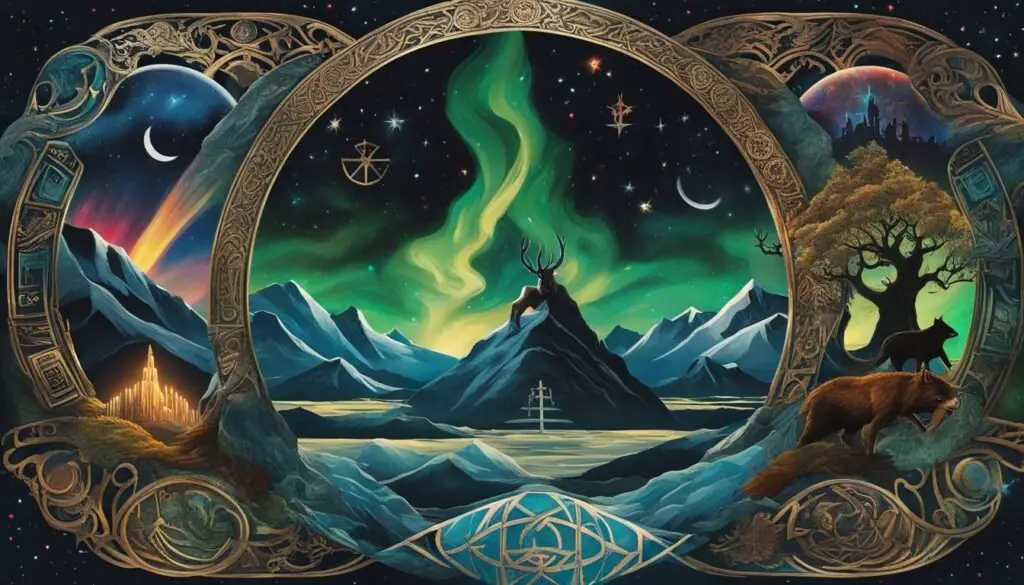
The cultural influence of Norse mythology extends beyond the Nordic countries. It has been embraced in various forms of popular culture worldwide, leaving a lasting impact on different aspects of contemporary society.
Norse mythology has found its way into the world of video games, captivating players with its rich and immersive narratives. Games like God of War, The Elder Scrolls V: Skyrim, and Assassin’s Creed Valhalla feature Norse-inspired settings, characters, and storylines that transport players into the mythological realm. These games allow players to experience the epic adventures and legendary battles of Norse mythology firsthand.
Furthermore, Norse mythological elements can be found in music, art, and fashion. Musicians and bands draw inspiration from Norse mythology in their lyrics and album artworks, infusing their works with the mystical and heroic qualities of the Norse gods and sagas. Artists incorporate Norse mythological motifs into their paintings, sculptures, and illustrations, capturing the essence of this ancient lore in visual form. Additionally, the aesthetic appeal of Norse mythology has influenced fashion trends, with designs featuring Viking-inspired elements such as runes, symbols, and intricate patterns.
The enduring appeal of Norse mythology in global culture reflects its universal themes and timeless narratives. Its influence can be seen and felt in various forms of popular culture, transcending geographical boundaries and captivating audiences worldwide.
Norse Mythology in Mythological Studies
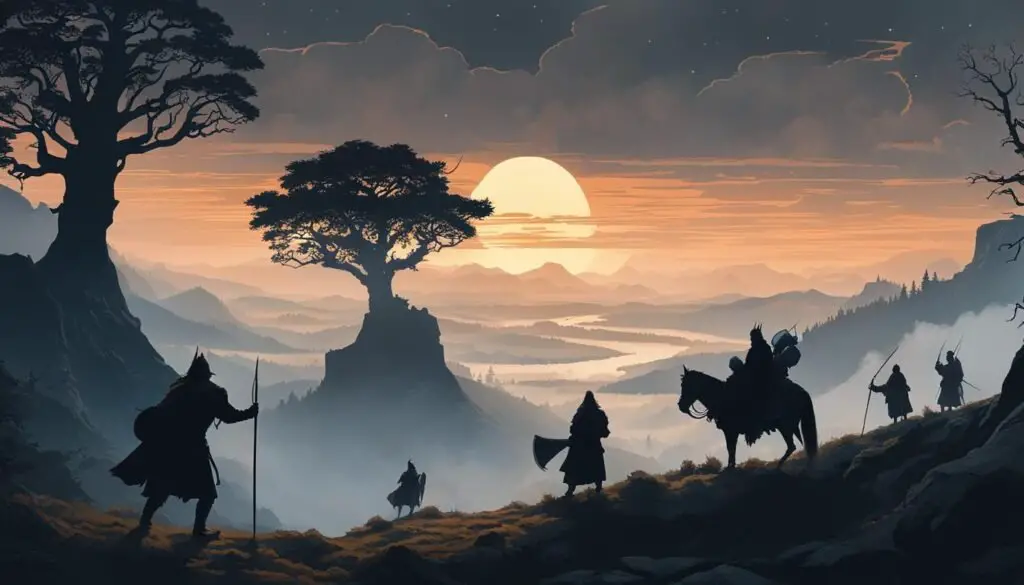
Norse mythology has garnered significant attention from scholars and researchers, making it a subject of academic study and research across various universities and institutions. Academic programs and courses specifically dedicated to Norse mythology provide students with the opportunity to delve deep into the rich tapestry of this ancient belief system.
Academic research on Norse mythology explores a wide range of aspects, including the mythology’s origins, symbolism, and cultural significance. Scholars analyze and interpret the well-documented ancient texts, such as the Poetic Edda and the Prose Edda, to gain insights into the mythological world and its relevance to different historical periods.
The study of Norse mythology in academia not only sheds light on the ancient beliefs and practices of the Scandinavian people but also fosters a broader understanding of cultural narratives and the human experience. It offers valuable perspectives on topics such as identity, religion, storytelling, and the intersection of myth and history.
Key Themes Explored in Academic Research on Norse Mythology:
- The historical and archaeological contexts of Norse mythology
- The complex pantheon of Norse gods, goddesses, and supernatural beings
- The symbolism and metaphorical aspects of Norse mythological narratives
- The correlation between Norse mythology and other mythological systems
- The role of Norse mythology in shaping cultural and societal norms
The Importance of Norse Mythology in Academic Circles:
The academic study of Norse mythology contributes to the preservation and understanding of cultural heritage. Through rigorous research and analysis, scholars deepen our knowledge and appreciation of this ancient belief system. Academic institutions provide a platform for the dissemination of scholarly findings, fostering intellectual growth and critical thinking among students and researchers alike.
Furthermore, the academic exploration of Norse mythology extends beyond the realms of pure research. It influences various fields such as literature, history, archaeology, anthropology, and even popular culture, shaping our collective consciousness and enriching our understanding of the human experience.
Norse Mythology in Contemporary Folklore
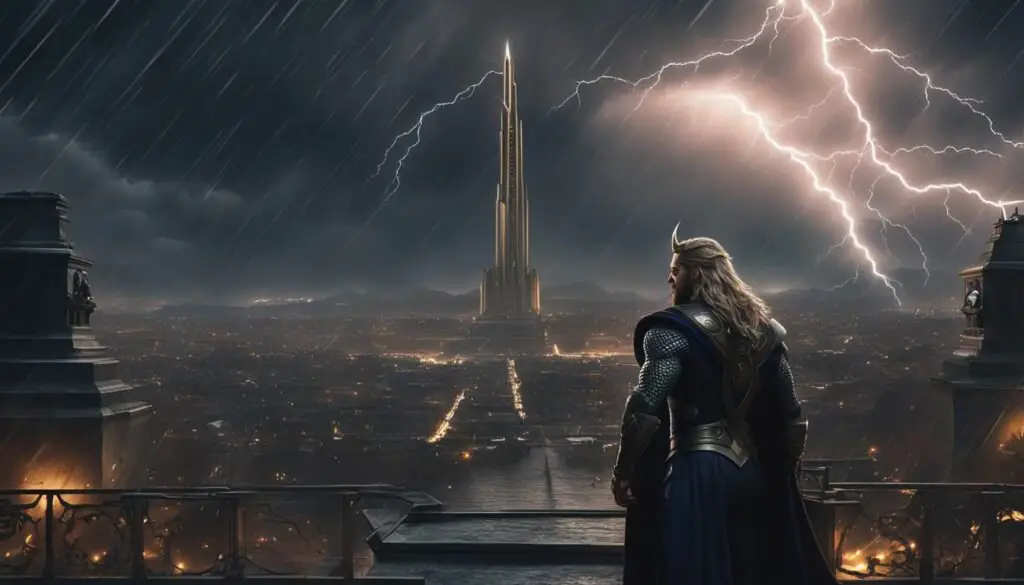
Norse mythology continues to captivate and inspire people today, as it has found its way into contemporary folklore and urban legends. Modern interpretations and adaptations of Norse myths have become deeply ingrained in the collective imagination, influencing storytelling and cultural traditions. Elements from Norse mythology can be found in urban legends and folklore in various countries, further enriching the enduring legacy of the Norse gods and their stories.
From tales of mighty Thor battling supernatural creatures to the mischievous shenanigans of Loki, the gods and characters of Norse mythology have become iconic figures in modern folklore. Their complex personalities and epic adventures have been interwoven into stories passed down through generations, leaving a lasting impact on oral traditions and local legends.
One example of Norse mythology’s influence in contemporary folklore is the portrayal of the Valkyries. These mythical warrior women who chose the slain on the battlefield have been reimagined as powerful protectors in modern urban legends. Stories of mysterious figures appearing in times of danger to assist or guide individuals bear the hallmarks of Valkyrie mythology.
Modern interpretations of Norse mythology can also be seen in popular culture phenomena, such as superhero movies and fantasy novels. The popularity of characters like Thor and Loki in the Marvel Cinematic Universe has further cemented their place in contemporary folklore, sparking the imaginations of audiences worldwide.
Urban Legends with Norse Mythology Themes
- A tale of a hidden treasure guarded by a fierce dragon, reminiscent of the mythical creature Níðhöggr
- A spate of strange weather occurrences believed to be the work of the trickster god Loki
- A mysterious blacksmith who forges weapons with supernatural powers, echoing the legendary craftsmanship of the dwarf blacksmiths in Norse mythology
- A haunted forest rumored to be the dwelling place of vengeful spirits, inspired by the dark and enchanted realms of Norse mythology
The enduring presence of Norse mythology in contemporary folklore speaks to its timeless appeal and universal themes. As stories are retold and adapted, the myths continue to evolve and resonate with new generations. Norse mythology’s influence on modern culture is a testament to its enduring power and the captivating nature of its characters and narratives.
Norse Mythology in Art and Design
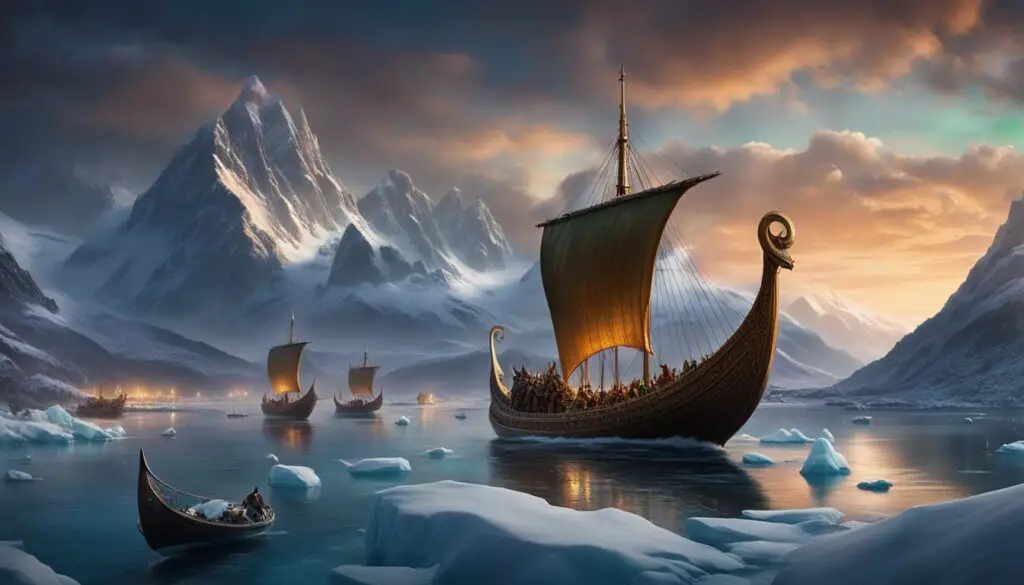
Norse mythology has long been a source of inspiration for artists and designers across different cultures and time periods. Its captivating tales and mythical characters have served as a rich tapestry for various art forms, including paintings, sculptures, illustrations, and more.
From ancient Norse carvings and runestones to contemporary artworks, artistic representations of Norse mythology have showcased the timeless allure of this ancient belief system. Artists have skillfully captured the complex characters, intricate symbolism, and epic narratives that make Norse mythology so captivating.
Whether it’s the valiant Thor wielding his mighty hammer, the cunning Loki with his shape-shifting abilities, or the majestic Valkyries guiding fallen warriors to Valhalla, Norse mythology offers a wealth of inspiration for artistic expression. Artists have explored diverse styles and mediums to bring these mythical beings and stories to life, injecting their unique interpretations into their creations.
One notable example is the celebrated painter and illustrator, Arthur Rackham. Known for his stunning illustrations of fairy tales and mythology, Rackham’s ethereal and intricate artworks often featured Norse mythological characters. His distinctive style beautifully captured the essence of these mythical figures, enchanting viewers with his imaginative portrayals.
Another renowned artist who incorporated Norse mythology into his work is Gustav Vigeland. Vigeland’s monumental sculpture park in Oslo, Norway, known as the Vigeland Park, showcases numerous sculptures that depict various aspects of human existence, including many inspired by Norse mythology. Notably, the centerpiece of the park is the monolithic sculpture known as the “Monolith,” which depicts intertwined human figures climbing towards the heavens, reminiscent of the mythic world tree Yggdrasil.
Contemporary artists and designers continue to find inspiration in Norse mythology, infusing their creations with its timeless themes and imagery. The influence of Norse mythology can be seen in various design disciplines, such as jewelry, fashion, and interior design. Elements like Viking-inspired motifs, intricate knotwork, and symbolic representations of Norse gods and creatures add an enchanting touch to modern designs.
Whether it’s a meticulously crafted tapestry depicting scenes from Norse mythology or a modern graphic design piece featuring Norse-inspired typography, the artistic representations of Norse mythology continue to captivate and inspire audiences around the world. By blending ancient myth with contemporary aesthetics, artists and designers pay homage to the enduring legacy of Norse mythology while keeping it relevant in today’s artistic landscape.
The Visual Appeal of Norse Mythology in Art and Design
The visual appeal of Norse mythology lies in its inherently dramatic and fantastical nature. The epic battles between gods and giants, the intricate realms of Asgard and Midgard, and the fascinating array of mythical creatures offer endless possibilities for artistic interpretation.
Artists and designers have skillfully brought these captivating elements to life through their use of color, composition, and symbolism. Whether it’s the vibrant hues in a painting, the intricate details in a sculpture, or the carefully chosen motifs in a jewelry piece, Norse mythology provides a rich visual language for artistic expression.
The distinct visual aesthetics of Norse mythology, characterized by its bold imagery and strong symbolism, lend themselves well to various art forms. The use of powerful symbols like Thor’s hammer Mjolnir, the Valknut, or the intricate knotwork patterns known as “Viking weave” adds depth and meaning to artistic representations. These symbols not only convey the essence of Norse mythology but also resonate with audiences on a deeper level, connecting them to the ancient stories and their cultural heritage.
By exploring Norse mythology through art and design, artists not only pay tribute to this rich cultural heritage but also create visual experiences that evoke emotions, spark imagination, and foster a deeper understanding of the mythological world. Through their artistic interpretations, they invite viewers to embark on a visual journey into the captivating realms of Norse mythology, where gods, heroes, and mythical creatures come to life.
Norse Mythology in Tourism and Cultural Heritage
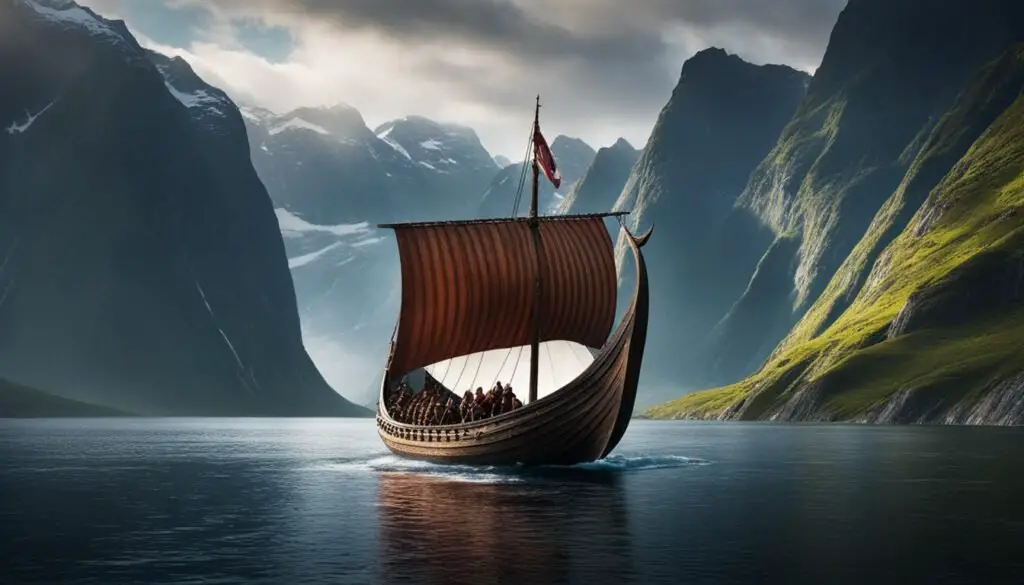
Norse mythology has become a captivating attraction for tourists seeking to explore the cultural heritage of the Nordic countries. The rich history and mythology of the region offer visitors a unique opportunity to immerse themselves in the ancient tales and traditions.
One way to experience Norse mythology in tourism is by visiting historical sites and landmarks associated with the mythology. From the ancient Viking ship museums in Norway to the burial mounds in Sweden, these destinations allow visitors to witness firsthand the remnants of a bygone era and appreciate the cultural significance of Norse mythology.
Museums dedicated to Norse mythology are also popular tourist destinations. They showcase ancient artifacts, manuscripts, and art that depict the gods and stories of Norse mythology. These museums offer a deeper understanding of the mythology and its influence on the cultural heritage of the Nordic countries.
- Participating in cultural events centered around Norse mythology is another way to experience the cultural heritage of the Nordic countries. Festivals, reenactments, and storytelling events provide visitors with an interactive and immersive experience, where they can witness live performances and engage with the mythology in a vibrant and dynamic setting.
- Cultural tourism in the Norse countries allows travelers to not only explore the natural beauty of the region but also delve into the myths and legends that have shaped the cultural identity of these nations. Whether it’s attending a traditional Viking feast, listening to ancient sagas being recited, or witnessing Norse-inspired music and dance performances, cultural tourism offers a truly enriching experience.
- Through tourism, visitors gain a deeper appreciation for the enduring legacy of Norse mythology and its impact on the cultural heritage of the Nordic countries. The myths and stories that have been passed down through generations continue to captivate and inspire people from around the world.
Norse mythology in tourism and cultural heritage not only offers a glimpse into the ancient past but also provides a connection to the present-day traditions and cultural practices of the Nordic countries. It is an opportunity to explore the roots of a rich and diverse heritage that continues to shape the identity of these nations in the modern world.
Conclusion
Norse mythology, with its rich narratives and timeless themes, has made a profound impact on global culture. From its Scandinavian origins to its widespread influence, Norse mythology has permeated various aspects of society, including literature, art, popular culture, and academic research.
The enduring popularity of Norse mythology can be attributed to its universal appeal and resonance. The epic tales of gods, heroes, and mythical creatures captivate the imagination and inspire creativity. The significance of Norse mythology lies in its ability to convey profound insights into human nature, the cycle of life and death, and the interconnectedness of the natural world.
Through its influence in literature, art, and popular culture, Norse mythology continues to shape contemporary storytelling and entertainment. From Marvel comics to popular video games, the gods and creatures of Norse mythology have become icons of modern imagination. Furthermore, Norse mythology holds a special place in the cultural heritage of the Nordic countries, where it is preserved, celebrated, and taught to future generations.
In summary, Norse mythology’s impact extends far beyond its original Scandinavian roots. Its legacy is one of enduring fascination, cultural significance, and universal appeal. Whether through ancient texts, contemporary adaptations, or academic study, Norse mythology continues to captivate and inspire, reminding us of the timeless power of storytelling and the enduring human quest for meaning and understanding.
FAQ
What countries have Norse mythology?
Norse mythology originated in Scandinavia, specifically in countries such as Norway, Sweden, and Denmark. However, its influence has spread beyond its Scandinavian origins to various countries worldwide.
What is the cultural significance of Norse mythology in Scandinavia?
Norse mythology holds a special place in the cultural heritage of the Nordic countries. It is celebrated through festivals, reenactments, and storytelling events. Norse mythology is taught in schools and is an integral part of the cultural identity of Norway, Sweden, and Denmark.
How has Norse mythology influenced popular culture?
Norse mythology has made its mark in various forms of popular culture worldwide. It has had a significant impact on literature, art, video games, comics, graphic novels, and even urban legends. Norse mythological elements can be found in works of renowned authors, artists, and game developers, reflecting its enduring appeal and relevance in contemporary society.
What role does Norse mythology play in comics and graphic novels?
Norse mythology has inspired numerous comic books and graphic novels. It has been depicted in Marvel comics, with characters like Thor and Loki playing prominent roles. Additionally, there are Danish comic book series and manga/anime adaptations that draw inspiration from Norse mythology. Graphic novels aimed at young readers have also been developed to introduce Norse myths in an engaging way.
How has Norse mythology influenced literature?
Norse mythology has had a significant impact on literature throughout history. Authors like William Morris and J.R.R. Tolkien have drawn inspiration from Norse mythological stories and incorporated them into their works. In more recent times, authors such as Neil Gaiman and Rick Riordan have also incorporated Norse gods and stories into their novels, attracting a new generation of readers.
How is Norse mythology depicted in webcomics?
Webcomics have become a popular platform for exploring and reimagining Norse mythology. Artists and writers use webcomics to present modern interpretations of Norse gods and creatures or incorporate Norse mythological elements into their fantasy stories. It provides a unique and accessible way for contemporary audiences to engage with Norse mythology.
How is Norse mythology studied in academia?
Norse mythology is a subject of academic research and study. Universities and institutions offer courses and programs specifically focused on Norse mythology. Scholars and researchers explore various aspects of the mythology, such as its origins, symbolism, and cultural significance.
How is Norse mythology represented in contemporary folklore?
Norse mythology has become part of the collective imagination and storytelling traditions in various countries. Modern interpretations and adaptations of Norse myths have influenced urban legends and contemporary folklore, adding to the enduring legacy of the Norse gods and their stories.
How has Norse mythology influenced art and design?
Norse mythology has served as a subject for paintings, sculptures, illustrations, and other art forms throughout history. From ancient Norse carvings to contemporary artworks, Norse mythology has been depicted in various artistic styles and mediums. Its complex characters, rich symbolism, and epic narratives continue to inspire artists and designers worldwide.
How is Norse mythology incorporated into tourism and cultural heritage?
Norse mythology attracts tourists interested in exploring the cultural heritage of the Nordic countries. Visitors can explore historical sites, visit museums, and participate in cultural events that celebrate Norse mythology. Tourism centered around Norse mythology provides an opportunity for people to immerse themselves in the rich history and mythology of the region.


